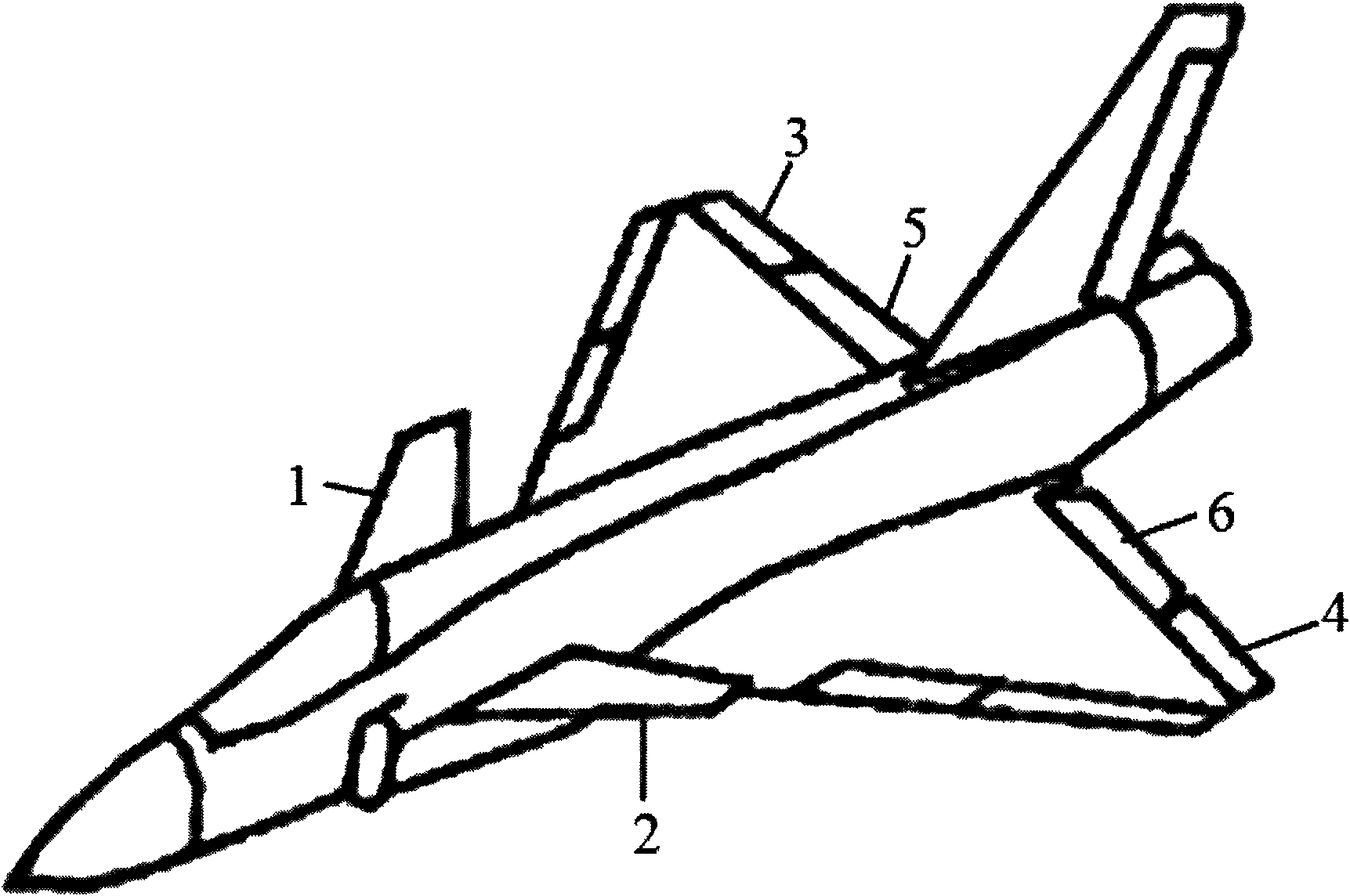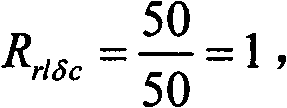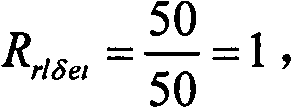Method of determining use priority of various control surfaces of multi-control surface plane at close-range stage
A multi-control surface and control surface technology, applied in the field of flight control, can solve problems affecting aircraft, slow response of aircraft control, and affecting aircraft flight performance, so as to reduce adverse costs and improve flight performance.
- Summary
- Abstract
- Description
- Claims
- Application Information
AI Technical Summary
Problems solved by technology
Method used
Image
Examples
Embodiment
[0018] With reference to accompanying drawing 1, adopt the method of the present invention to determine the use priority of each control surface of certain type multi-control surface aircraft in close-range air combat stage in the present embodiment. In the embodiment, the control surfaces suitable for use by the multi-control surface aircraft in the short-range air combat stage include: the right close-coupled canard 1, the left close-coupled canard 2, the right outer elevon 3, and the left outer elevon 4 , the right inner elevon 5, the left inner elevon 6 and the rudder, wherein since the rudder is the only heading control surface, it is not necessary to determine its deflection angle through the control allocation process, so it is necessary to determine the use priority in this embodiment The control surfaces are the right near-coupled canard 1, the left near-coupled canard 2, the right outer elevon 3, the left outer elevon 4, the right inner elevon 5 and the left inner ele...
PUM
 Login to view more
Login to view more Abstract
Description
Claims
Application Information
 Login to view more
Login to view more - R&D Engineer
- R&D Manager
- IP Professional
- Industry Leading Data Capabilities
- Powerful AI technology
- Patent DNA Extraction
Browse by: Latest US Patents, China's latest patents, Technical Efficacy Thesaurus, Application Domain, Technology Topic.
© 2024 PatSnap. All rights reserved.Legal|Privacy policy|Modern Slavery Act Transparency Statement|Sitemap



